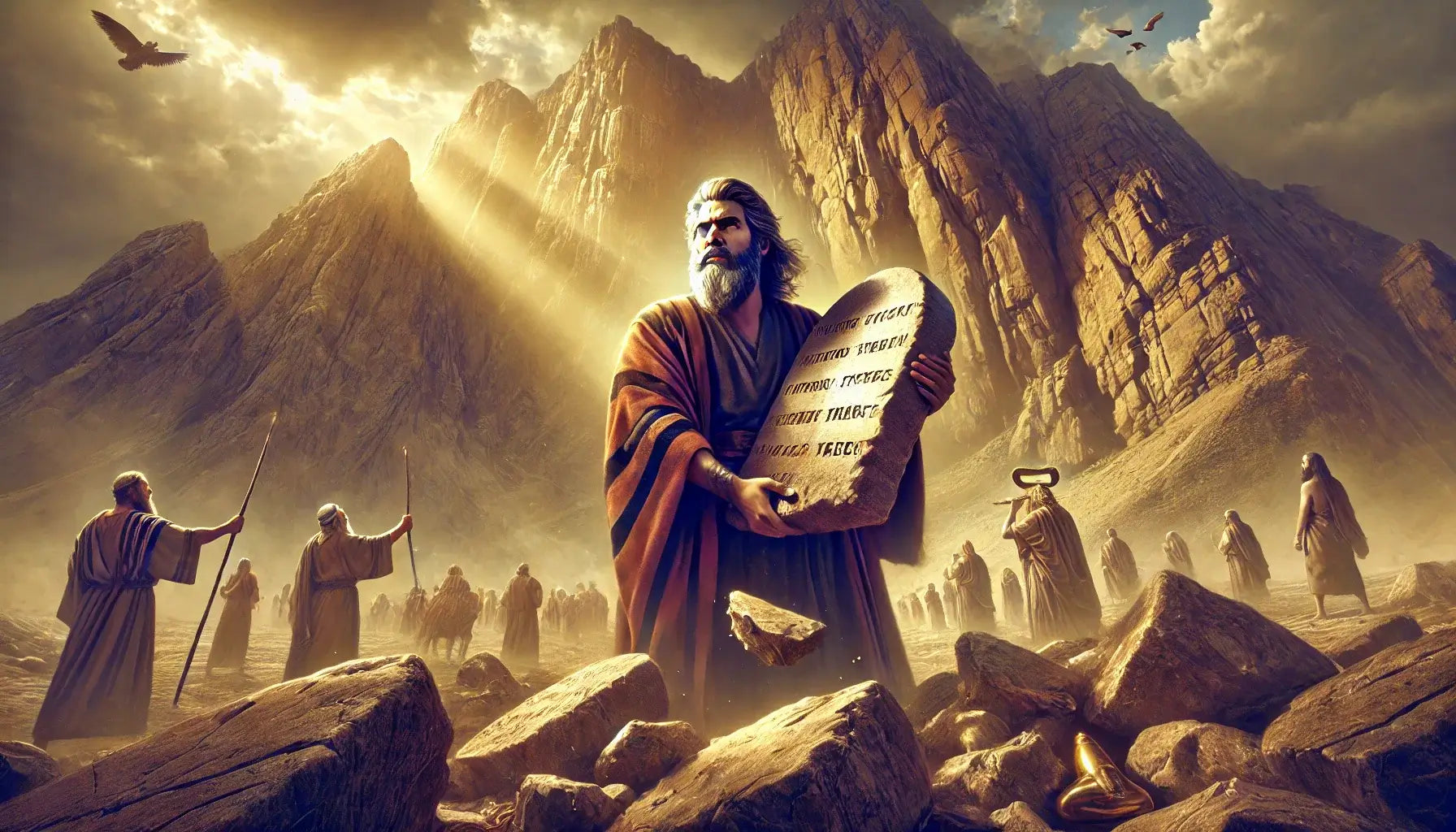The story of Moses breaking the Ten Commandments is one of the most powerful moments in the Bible. This event signifies a point of extreme anger and disappointment as Moses witnesses the faithlessness of the Israelites firsthand. This article will explore the context of this event, where it took place, and why Moses felt compelled to break the tablets.
The Background of the Ten Commandments
The Ten Commandments were given by God to Moses on Mount Sinai shortly after the Israelites escaped slavery in Egypt. They symbolize a covenant between God and His people, meant to guide the Israelites in living a life of faith and obedience. The commandments cover fundamental worship, respect, justice, and morality principles. Receiving these commandments was a significant moment for Moses and the Israelites, as they were set apart to be a holy nation in their newfound freedom.
Reference: "And the LORD said unto Moses, Come up to me into the mount, and be there: and I will give thee tables of stone, and a law, and commandments which I have written; that thou mayest teach them." —Exodus 24:12
Where Moses Breaks the Ten Commandments
The actual breaking of the Ten Commandments happens later in the Book of Exodus after Moses has been on Mount Sinai for 40 days and 40 nights. During this time, Moses was communing with God, receiving laws and instructions for the Israelites.
While Moses was away, the Israelites grew restless. They feared that Moses might not return and, in his absence, convinced Aaron (Moses' brother) to create a physical representation of a god they could worship. This led to the construction of the golden calf, which the Israelites began worshiping in a moment of faithlessness.
Location: The Foot of Mount Sinai
The tablets are broken at the foot of Mount Sinai, where Moses confronts the Israelites after descending from the mountain. Upon seeing the people worshipping the golden calf, dancing, and celebrating, Moses becomes overwhelmed with anger and throws the tablets down, shattering them at the mountain's base.
Reference: "And as soon as he came nigh unto the camp, that he saw the calf, and the dancing: and Moses' anger waxed hot, and he cast the tables out of his hands, and brake them beneath the mount." —Exodus 32:19
This moment at the foot of Mount Sinai marks a turning point in the story of the Israelites, highlighting the contrast between God’s law and the people’s lack of faith and obedience.
The Significance of Breaking the Tablets
Breaking the tablets was not merely an act of anger; it symbolized the Israelites' breaking of their covenant with God. By worshiping the golden calf, the Israelites showed they had already strayed from the path God had set for them. This act of idol worship was a direct violation of the first two commandments:
- Commandment 1: "Thou shalt have no other gods before me." — Exodus 20:3
- Commandment 2: "Thou shalt not make unto thee any graven image..." — Exodus 20:4
By breaking the tablets, Moses demonstrated that the Israelites had broken the covenant before they had fully received it. This physical act of breaking the stone tablets vividly illustrated the seriousness of their sin.
What Happened After Moses Broke the Commandments?
After breaking the tablets, Moses restored order and discipline among the people. He burned the golden calf, ground it to powder, and made the Israelites drink water mixed with the gold. This was a bitter reminder of their unfaithfulness. Moses then returned to God on Mount Sinai to intercede on behalf of the people, pleading for their forgiveness.
God ultimately forgives the Israelites, but not without consequences. Later, God commands Moses to chisel two new stone tablets, once again inscribing the commandments, as a renewal of the covenant.
Reference: "And the LORD said unto Moses, Hew thee two tables of stone like unto the first: and I will write upon these tables the words that were in the first tables, which thou brakest." —Exodus 34:1
The new tablets marked a fresh start and a renewed commitment to God’s laws, symbolizing His mercy and willingness to give the Israelites another chance.
Why the Breaking of the Commandments Matters
The story of Moses breaking the Ten Commandments holds deep lessons about faith, obedience, and the consequences of turning away from God. It reminds us that even when people make mistakes, there is a path back to forgiveness and restoration. This act also demonstrates God’s patience and willingness to renew His covenant with His people despite their imperfections.
Takeaways:
- Faithfulness is Key: The Israelites were reminded of the importance of staying faithful to God, even when circumstances are challenging.
- Leadership and Accountability: Moses showed the importance of holding the people accountable for their actions, even if difficult measures are required.
- Forgiveness and Renewal: God’s willingness to renew the commandments on new tablets symbolizes His mercy and desire for restoration.
Examining this pivotal event, we see how Moses’ actions emphasized the gravity of the covenant with God. Breaking the Ten Commandments symbolized the Israelites' broken faith, yet it also pointed to God’s grace, setting a powerful example of mercy and forgiveness.
























